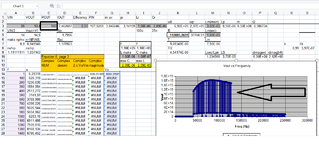alpercimendag
Newbie
Hello,
I am trying to make open loop simulasion for a LLC circuit. I am confused at some point. I am designing my half bridge LLC converter for a specific output voltage of 12V at 250W. Then I change the load(input voltage is the same) and redo my calculation to find new switching frequency. Output voltage is not 12V but far away from it.
So, I think I do not know how to calculate new switching frequency at different laods with the same input voltage. I have read all application notes available and none helps. I need someone else's answer with previous experience of designing LLC circuit.
Thanks,
Alper
I am trying to make open loop simulasion for a LLC circuit. I am confused at some point. I am designing my half bridge LLC converter for a specific output voltage of 12V at 250W. Then I change the load(input voltage is the same) and redo my calculation to find new switching frequency. Output voltage is not 12V but far away from it.
So, I think I do not know how to calculate new switching frequency at different laods with the same input voltage. I have read all application notes available and none helps. I need someone else's answer with previous experience of designing LLC circuit.
Thanks,
Alper
